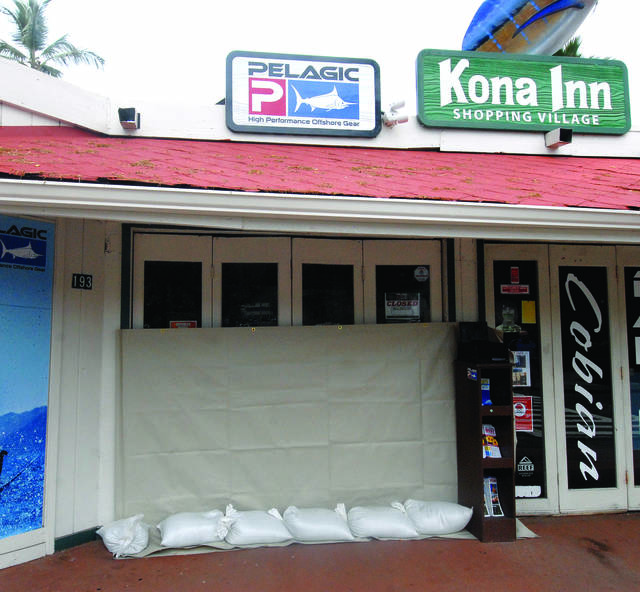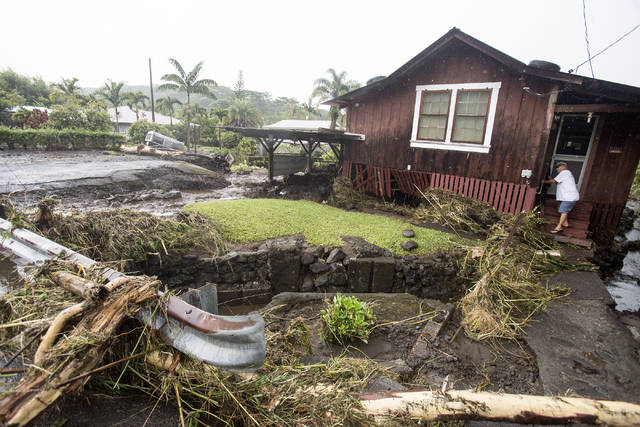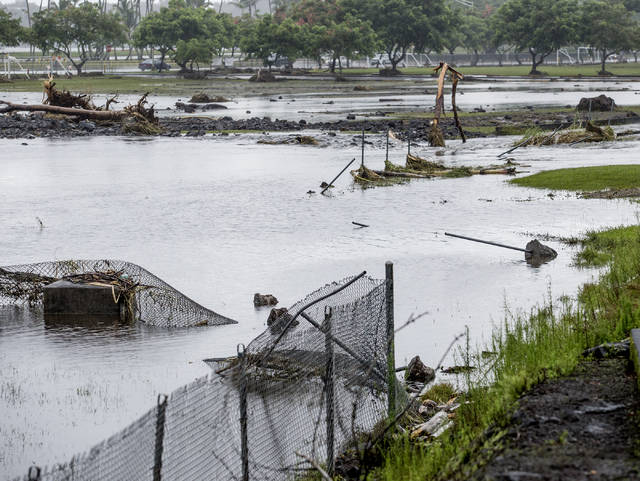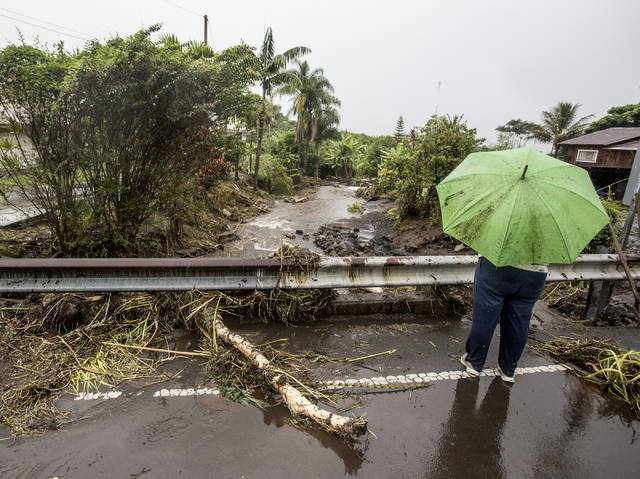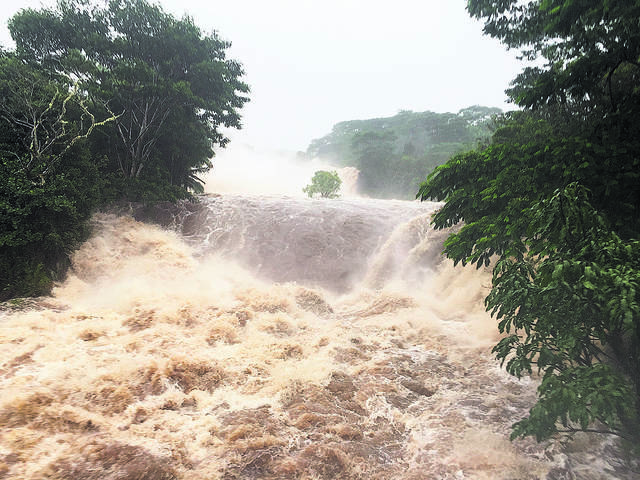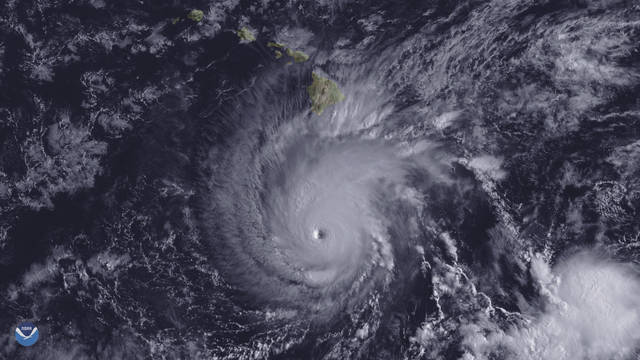2018 Central Pacific hurricane season wraps up today

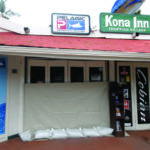
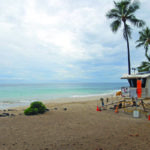
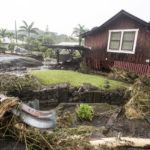
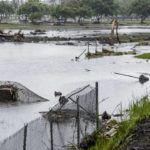
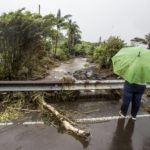
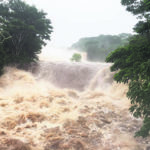
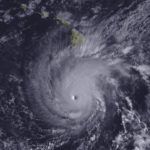
KAILUA-KONA — The 2018 Central Pacific hurricane season officially ends today. However, a developing El Niño could potentially fuel some offseason action.
Six cyclones — a category that includes depressions, storms and hurricanes — passed through the basin this season with each reaching hurricane strength at one point, said Robert Ballard, a forecaster with the Honolulu-based Central Pacific Hurricane Center.
Four were major hurricanes, packing sustained winds of at least 120 mph, and two reached the top of the Saffir-Simpson Scale at Category 5 strength, circulating winds greater than 157 mph. Two of the storms affected the islands, one dumping feet of rain over East Hawaii areas and the other making landfall on Maui and Lanai.
But while the official end of hurricane season is here, Ballard said there remains a chance for development of out-of-season storms as the weather phenomena known as El Niño takes hold.
“It’s not impossible that we could get a late-season or out-of-season tropical cyclone, we’ve had situations like that before,” Ballard said. “Though it’s pretty rare for that to happen.”
Over the past 20 or so years, that includes Hurricane Pali in January 2014, Tropical Depression 9C in late-December 2014/early-January 2015, Tropical Storm Omeka in 2010, and Tropical Storm Paka in 1997. Though none have affected the Hawaiian Islands in recent decades, a couple of storms that have came to Ballard’s mind.
Hurricane Iwa was a late season storm, forming Nov. 19, 1982. It passed just west of Kauai on Nov. 23 as a Category 1 storm, causing severe property damage, injuries and one death. Damage estimates reached up to $250 million, according to the Central Pacific Hurricane Center. Hurricane Nina formed Nov. 29, 1957, and grazed Kauai on Dec. 14, dumping more than 20 inches of rain in 14 hours at Wainiha, Kauai, and bringing high winds to Oahu areas.
“Iwa in ‘82 and Nina in ‘57 are great examples of real, dangerous, impactful, late-season hurricanes that can still kick our butts,” he said.
Most, if not all, late-season or out-of-season storms occurred amid strong El Niño conditions.
Currently, the federal Climate Prediction Center says there is an 80 percent chance of weak El Niño conditions taking hold this winter, and a 55-60 percent chance of those conditions persisting into spring 2019. During an El Niño event, sea surface temperatures become warmer than normal, which can fuel storms, but it’s also known to disrupt easterly trades, resulting in drier weather for Hawaii.
Amid neutral El Niño conditions, the 2018 Central Pacific hurricane season started off quiet with no storms in the Central Pacific until August, two months after the official season’s start on June 1.
The first storm, Hurricane Hector, which maxed out as a Category 4 storm, moved into the Central Pacific on Aug. 6. Hector ultimately passed a couple hundred miles south of Hawaii Island, but not before triggering a tropical storm warning for Hawaii that was discontinued when it became clear the storm would stay offshore.
A couple weeks later, Hurricane Lane entered the basin as a Category 3 storm. As it approached the state, the storm intensified to a Category 5 hurricane but weakened as it closed in, passing about 250 miles southwest of the Big Island as a Category 3 storm on Aug. 22.
West Hawaii had been prepared to take a hit from the storm, but that didn’t materialize. Instead, windward areas, from North Kohala to Puna, took the brunt of the storm. Some parts of East Hawaii recorded more than 4 feet of rain as the storm passed.
Damage to county facilities totaled about $20 million and an estimated 152 homes were damaged with 59 sustaining major damage, Managing Director Wil Okabe said in the storm’s wake.
Behind Lane was Hurricane Miriam, which peaked as a Category 2 storm before dissipating far east of the Big Island, followed by Hurricane Norman, which entered the Central Pacific on Sept. 4. Norman reached Category 3 strength after entering the basin, but sputtered out and tracked north of the islands.
Hurricane Olivia was next, entering the Central Pacific on Sept. 8 as a Category 1 storm. As Olivia got closer to the Hawaiian Islands, tropical storm watches were issued statewide, and on Sept. 12, Olivia made landfall as a tropical storm over Maui and Lanai, packing heavy rain and high winds.
Walaka, the only named storm to form in the Central Pacific since Hurricane Ulika in September 2016, was the last storm to impact the Central Pacific this season, popping up Sept. 29 more than 1,000 miles southeast of Hawaii.
The hurricane, which peaked as a Category 5 storm, traveled south of the main Hawaiian Islands before heading north, threatening Johnson Atoll and prompting the evacuation of scientists working there. It sputtered out Oct. 6.
Since Walaka’s demise, it’s been quiet, despite the expectation of El Niño conditions setting in by December.
“It’s a real big question as to why we suddenly saw hurricane season slow down after some really active weeks,” said Ballard. “That’ll be something we’ll take a look at and try to figure out what happened.”


